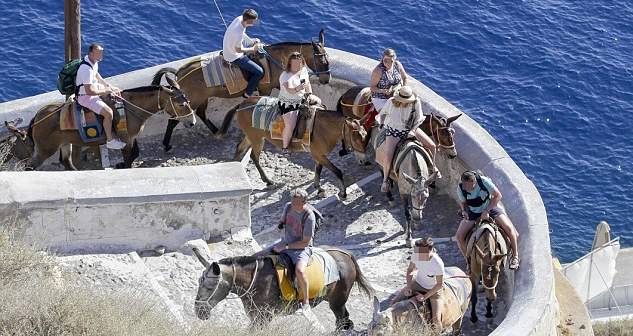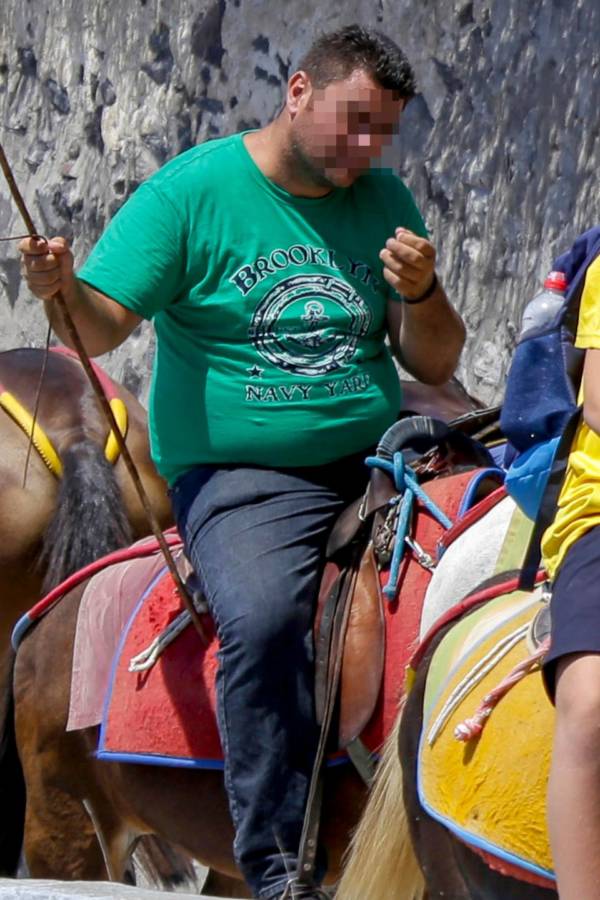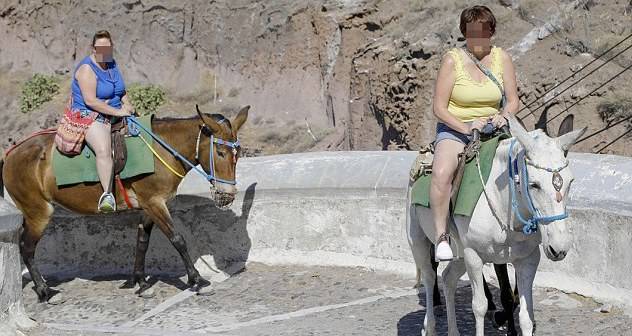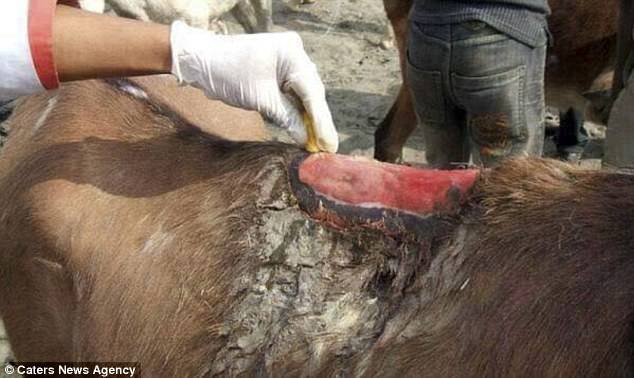"The obese and overweight tourists, combined with the lack of shade and water as well as the sheer heat and 568 cobbled steps, is what is causing such a problem."

Caters News Agency
What started out as a way for tourists to sightsee is turning into a nightmare for the donkeys involved.
Thousands of tourists flock to the Greek island of Santorini every day to take in the beautiful sites by riding donkeys up and down the cobbled steps of the island’s hilly terrain. However, an increase in the number of overweight tourists saddling up and riding the donkeys, in addition to poor working conditions overall for the animals, has lead to a wide range of injuries for the donkeys, including spinal injuries and open wounds, according to the Daily Mail.
“The obese and overweight tourists, combined with the lack of shade and water as well as the sheer heat and 568 cobbled steps, is what is causing such a problem,” a spokesperson for the Help the Santorini Donkeys group said in a statement.

Athanasios Gioumpasis/The Sun
“There should be a weight restriction,” the spokesperson added in the statement. “With donkeys it should be no more than eight stone, but how would that be imposed and who would be there to make sure that happened?” (It is recommended that the animals carry no more than 20 percent of their own body weight.)
And because the donkeys are now being overloaded, locals have now been forced to cross-breed their donkeys with mules because standard donkeys are not strong enough to bear the weight of all the incoming tourists. According to Unilad, during the busy holiday tourism season, between May and October, cruise ships can deliver more than 1,000 tourists a day to the island.

Caters News Agency
Santorini resident Christina Kaloudi moved from Athens to the island a decade ago and started the Santorini Animal Welfare Association in an effort to help the donkeys. She says that even though she’s seen the number of overweight tourists increase over the last 10 years, the donkeys have many other problems to worry about in addition to the heavy riders.
“The holiday season on islands is now a lot longer than it used to be, meaning that the donkeys are pretty much in work the whole year round,” Kaloudi told the Daily Mail. “If they are not transporting tourists up the steps they are moving building materials or transporting heavy bags of rubbish.”
According to the Daily Mail, donkeys are often forced to make four or five journeys a day up the cobbled steps. Temperatures can soar up to 86 degrees Fahrenheit and some donkeys are given no rest, no sun protection, and no water.

Caters News AgencyWound on a donkey from an ill-fitting saddle
Kaloudi says that while some owners treat their animals well, many have to deal with terrible conditions.
“There are some good owners out there that follow the code but generally donkeys are worked into the ground and then disposed of when their working lives are over,” Kaloudi said. “They are made to work in terrible conditions without adequate water, shelter or rest and then I find them outside my shelter, barely alive.”
An international code of practice for working equines was signed by island officials back in 2008, but unfortunately no one was designated to enforce the regulations and as a result, the donkeys’ quality of life suffers. Kaloudi said she will continue to fight for the animals and act as their advocate.
“Donkeys are very resilient animals and I will keep going for as long as they can, so when they come to me in this state, I have the utmost respect for them,” Kaloudi says.
Next, check out these 23 beautiful photos of Santorini, Greece. Then, read about the uproar resulting from a Chinese zoo’s decision to feed a live donkey to tigers.





